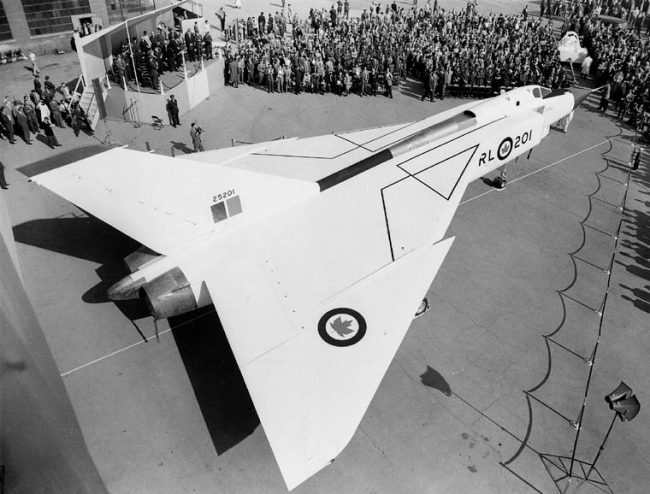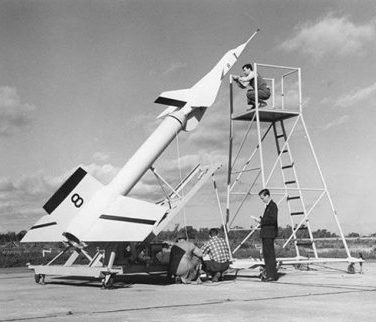
Hunt for remains of iconic Avro Arrow gets underway in Lake Ontario
by Canadian Manufacturing.com Staff

The jet program was abruptly cancelled in 1959, putting 30,000 Canadians out of work at Avro and its subcontractors. The decision sent Canadian engineers scrambling to the likes of Lockheed Martin, Boeing and NASA

Six CF-105 Arrows were completed in the 1950s before the program was abruptly cancelled by the federal government
TORONTO—The search is on for a few small pieces of Canadiana.
It’s been nearly 60 years since John Diefenbaker’s government mothballed the Avro Arrow jet program, but the doomed homegrown fighter still flies high in the public imagination.
Now, a team of sonar specialists and an autonomous underwater vehicle will take to the waters off Point Petre, a former military test site east of Toronto, looking to recover a few long-lost artifacts from an earlier age of Canadian aviation and engineering.
Long a source of pride—and bitterness—among Canadians, the Avro Arrow program was abruptly cancelled by the federal government in 1959. The decision put tens of thousands out of workers out of jobs at Avro and its subcontractors and sent Canadian engineers scrambling to the likes of Lockheed Martin, Boeing and NASA.
Meanwhile, six completed jets, the program’s production tooling and all development-related material was purged. Just a few relics escaped destruction.
The new search seeks to uncover nine more.

Avro technicians preparing an Avro Arrow test model to fire out over Lake Ontario at Point Petre in the 1950s. PHOTO: Kraken
During the lead-up to production for the CF-105 Arrow, engineers at Avro launched nine free flight test models of the plane into Lake Ontario. The one-eighth scale replicas have never been found and rest somewhere off Point Petre in Prince Edward County, Ont. They were launched between 1954 and 1957 to test the design’s aerodynamics and were powered by booster rockets, which propelled them briefly at supersonic speeds.
Despite advances in sonar technology, the test models have all been at the lakebed for at least 60 years and are far from being obvious targets. The full-sized CF-105 Arrow was designed to be 24 metres long with a 15-metre wingspan, but each test model is just three metres long with a two-metre wingspan.
All previous attempts to locate the lost test models have failed.
The project is sponsored by Ontario’s Osisko Mining Inc. along with a number of financing partners, including National Bank, the Bank of Montreal, the Canada Aviation and Space Museum and the Royal Canadian Air Force. Newfoundland tech firm Kraken Sonar Inc. will carry out the search using its underwater robotics technology.
The project’s ultimate goal is to uncover the resting place of the nine test models, then raise them and house them at museums in Ottawa and Trenton, Ont. The companies did not release the exact cost of the mission, but Kraken said its search contract is worth less than $500,000.
The teams plan to deploy its autonomous search technology later this month.